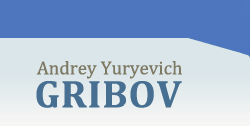
| HOME |

|
ABOUT THE AUTHOR |

|
|

|
WHERE TO BUY |


Quasi-money Part I. Part III.
Part IV.
In order to define the ease with which any type of assets can be
turned into an economically-viable medium of circulation, economists
use the term «liquidity». As money fulfils the economic role of a means
of circulation, it is the most liquid type of asset. The liquidity of other
assets can vary. The majority of organisations, at any moment, can be
sold with minimal transaction costs and fluctuations in share prices;
therefore they serve as relatively liquid assets. «It is only the likeness of money, since it is not possible to use them directly as a means of buying
and paying. In the conditions of contemporary capitalism, quasi-money
is the main and the most dynamic component of monetary
aggregates»173 Many economists emphasise such a factor as liquidity when answering
the given question. From their point of view, any product which can be
turned very quickly into money, can be included in the monetary mass. On the one hand, it is a highly practical and simple model for discussion, allowing us to regard as aggregate M1 precious metals and other goods, which can be turned into money on the goods market in the twinkling of an eye. But then the question arises: what period of liquidity does a product have to have, in order for it to be included in the monetary aggregate? And if such a period is equals one day, then why not include in the M1 aggregate those market goods which become money in the course of a market session, such as metals, cereals, oil, concentrated orange juice? And what about a studio apartment in Moscow with a one-day period of liquidity? |
Copying information from this website is only allowed under condition of referring to this web link.
Copyright © 2008 Andrey Gribov
All rights reserved